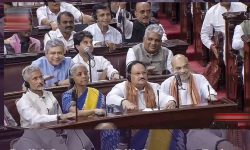
Hundreds of millions of years ago, coelacanths evolved, and scientists recently uncovered the best-preserved ancient coelacanth fossil ever. According to research published in Nature Communications, the fossil comes from the Gogo Formation on Gooniyandi Country, Northern Western Australia. By examining the evolutionary history of hundreds of known coelacanth species, we aimed to understand the species’ origins. Surprisingly, the ocean had no major influence on coelacanth evolution.
Coelacanth diversity increased during the dinosaur era, which began 250 million years ago. Currently, over 175 ancient fossil species have been discovered globally. However, coelacanth fossils mysteriously vanished from records 66 million years ago, at the end of the Cretaceous period. For a long time, scientists thought the coelacanths perished in the asteroid strike that also wiped out the dinosaurs.
Everything changed in 1938 when South African fishermen discovered a unique fish in deep waters. Marjorie Courtenay-Latimer, a local museum employee, recognized its uniqueness immediately. She enlisted J.L.B. Smith, an ichthyologist, to study the fish. Smith identified and named it Latimeria, marking the first live coelacanth encountered by science.
Discovering the “Lazarus fish” was as groundbreaking as finding a living Triceratops in North America’s jungles. Today, coelacanths are often called “living fossils.”
How Earth’s Movements Shaped Coelacanth Evolution
The scientists analysed the evolutionary history of every known ancient coelacanth fossil as a result of our research on the new species. They calculated the rates of evolution during their 410 million-year existence while doing so.
In general, they discovered that coelacanths have developed slowly with a few remarkable exceptions.
Additionally, they examined a number of environmental factors that the researchers thought would have made an impact on the rates of Coelacanth evolution. These included air carbon dioxide levels, water oxygen content, ocean temperatures and tectonic plate activity.
Latimeria: More Than Just a “Living Fossil”
Latimeria chalumnae and Latimeria menadoensis are the two surviving species closely examined, along with fossilized coelacanths. Despite appearing nearly identical at first glance, scientists differentiated them from their extinct relatives after further analysis.
Although the evolution of new features in Latimeria has largely stopped, some changes still occur in the body’s dimensions and DNA. Therefore, it may not be accurate to label it a “living fossil.”









